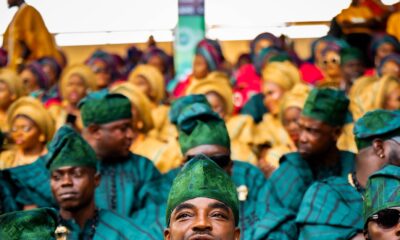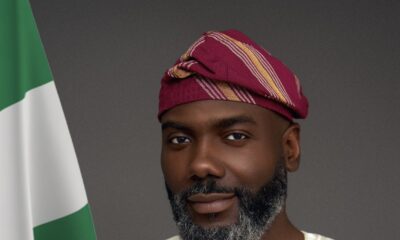News
This Is What’s Happening in Congo

Photo credit: Instagram
On February 8, while the DR Congo’s national anthem was being played, ahead of the semi-final match between Ivory Coast and The Democratic Republic of Congo (DRC), the DR Congo players and their coach all covered their mouths with their right hands and pointed two fingers of their lefts hands to their temples. The action was a silent protest for peace.
“It was a message to show support to the victims, to notify (people) that there are indeed things happening in the east and that it is necessary to shed light on it. People are disappointed about that, too. A national football team is a driving force for a nation. And this evening, it was also our duty to be able to inform what is happening behind the scenes.” Sébastien Desabre, the DR Congo’s football team coach said.
With black bands on the player’s arm, it was not just a protest for peace, it was also to bring limelight to the armed violence happening in the eastern part of the country.
View this post on Instagram
The Congo Wars
There have been two wars in DRC since 1996, both resulting in the tragic loss of as many as 6 million lives. The First Congo War, occurring between 1996 and 1997, was triggered by the aftermath of the 1994 Rwandan Genocide, where ethnic Hutu extremists in Rwanda (DRC’s eastern neighbour) killed an estimated one million minority ethnic Tutsis and moderate Hutus. 1998 the Second Congo War broke out due to the deteriorating relations between Kigali and Kinshasa. The impact of these conflicts on the DRC has been so devastating, making it one of the deadliest conflicts in world history.
In Eastern Congo, more than 120 armed groups are fighting for power, land and valuable mineral resources, while some strive to defend their communities. For decades, these armed groups have relentlessly waged campaigns of violence in the mineral-rich region and have been accused of mass killings. One major group, M23, has been said to be responsible for a spike in violence in 2021 when the rebel group resurfaced and initiated attacks.
The Movement of 23 March (M23) was created in May 2012, following desertions in April of mostly ex-soldiers from the Congrès National pour la Défense du Peuple (CNDP). These former soldiers had previously been integrated into the Armed Forces of the Democratic Republic of Congo (FARDC), the national army, following a peace agreement struck on 23 March 2009 between the CNDP and the DRC government.
More facts about the DRC situation and conflicts you should know:
- The Democratic Republic of Congo (DRC) is home to some of the world’s largest reserves of metals and rare earth minerals used to produce advanced electronics. Yet, it remains one of the world’s poorest countries due to the wars.
- As of 2023, DRC is home to an estimated 5.7 million internally displaced people in urgent need of more than 2 billion dollars in medical and other aid.
- The DRC shares its borders with nine neighbouring countries: Angola, Burundi, the Central African Republic, the Republic of the Congo, Rwanda, South Sudan, Tanzania, Uganda, and Zambia.
- Since gaining independence in 1960, the DRC has experienced persistent hostilities.
- DRC is home to nearly 7 million people who have been internally displaced due to the conflicts.





















